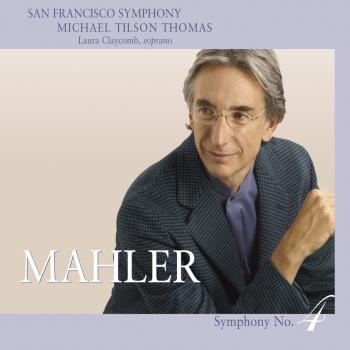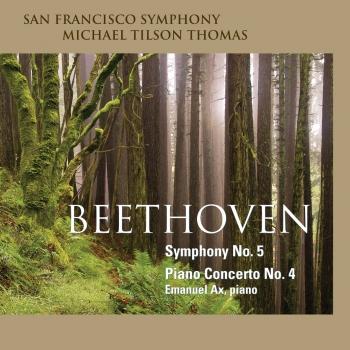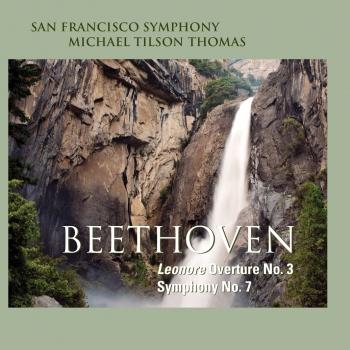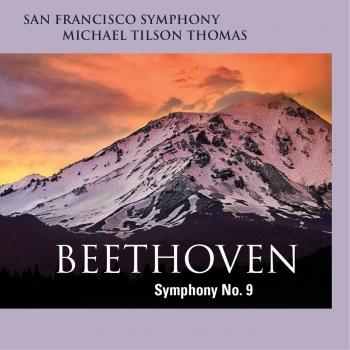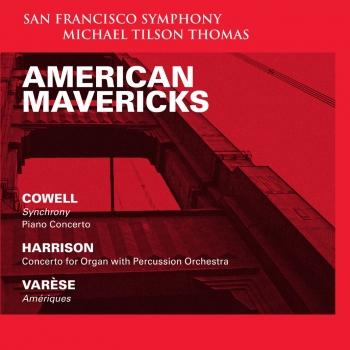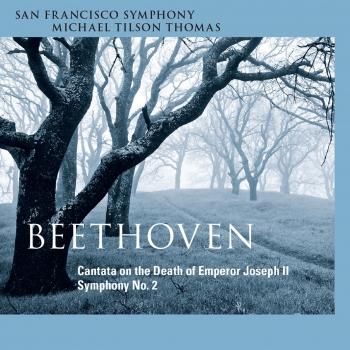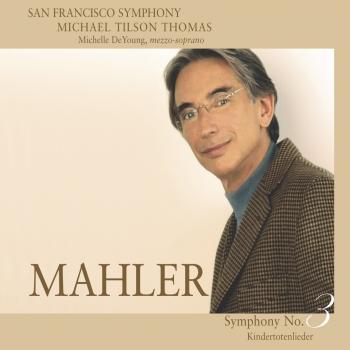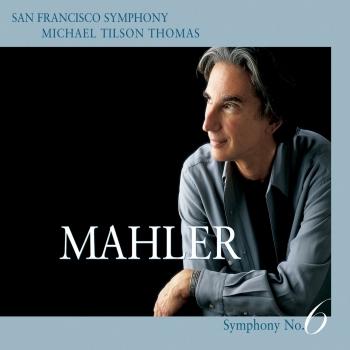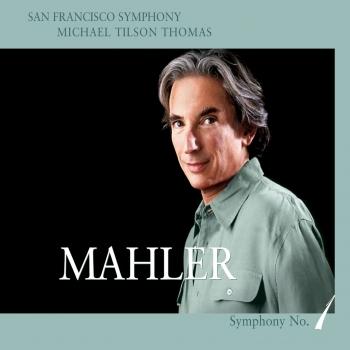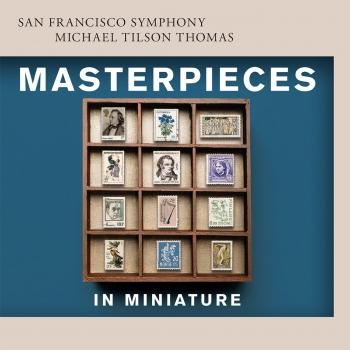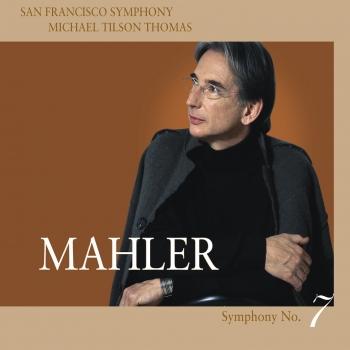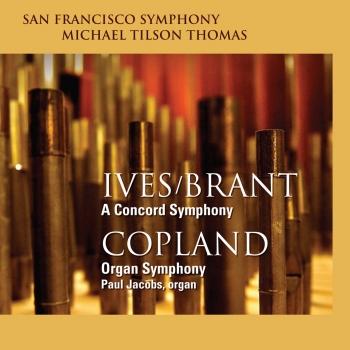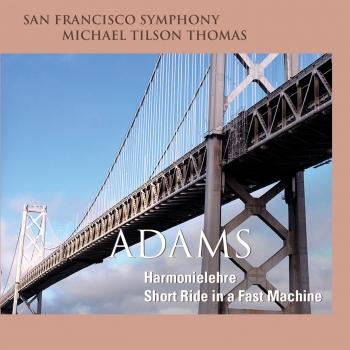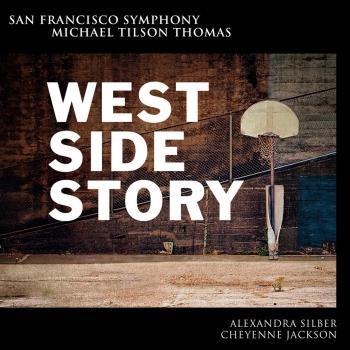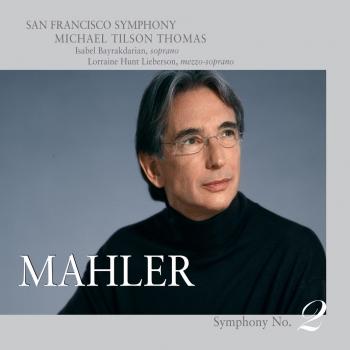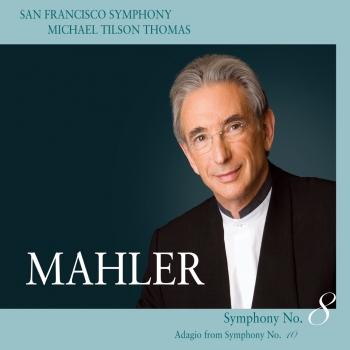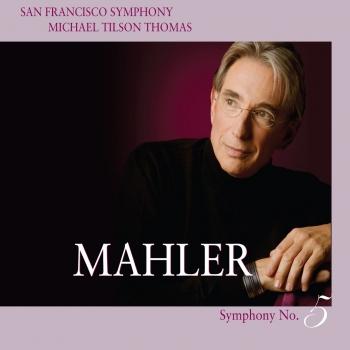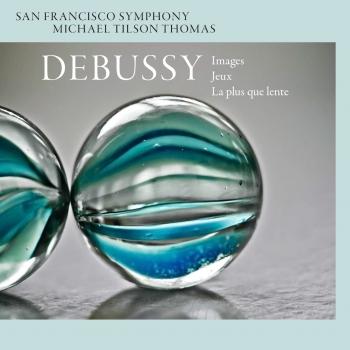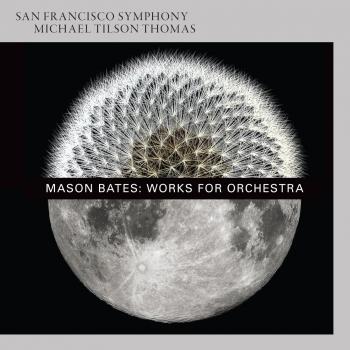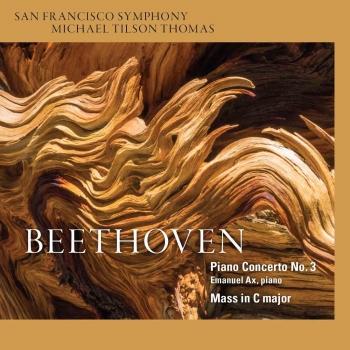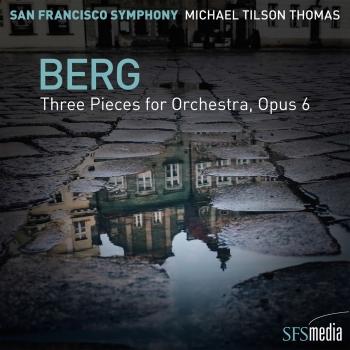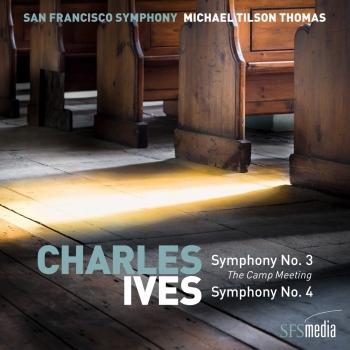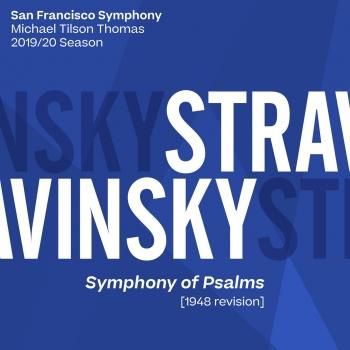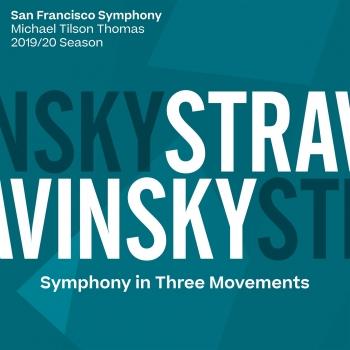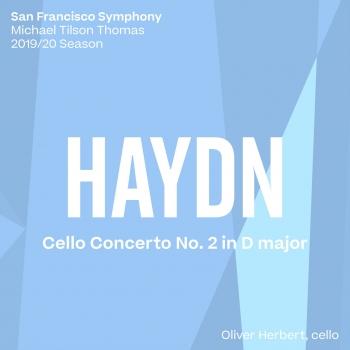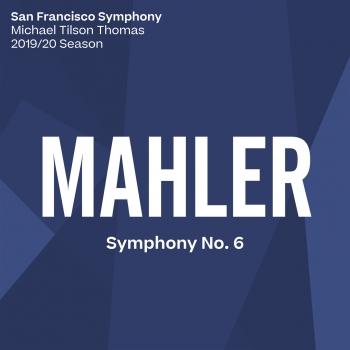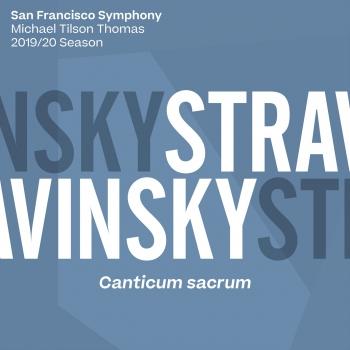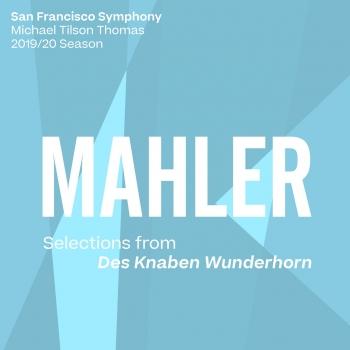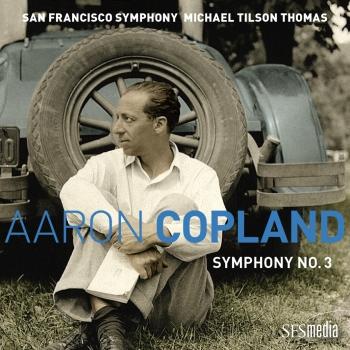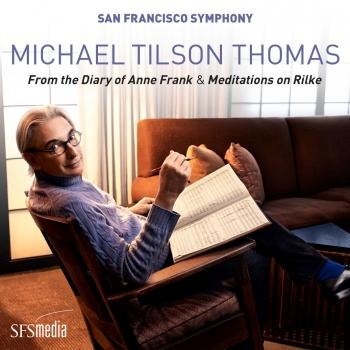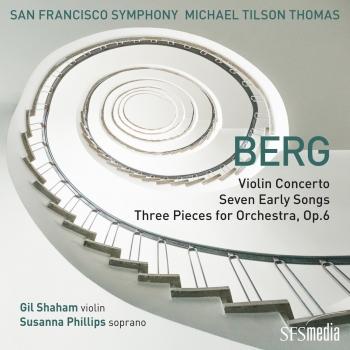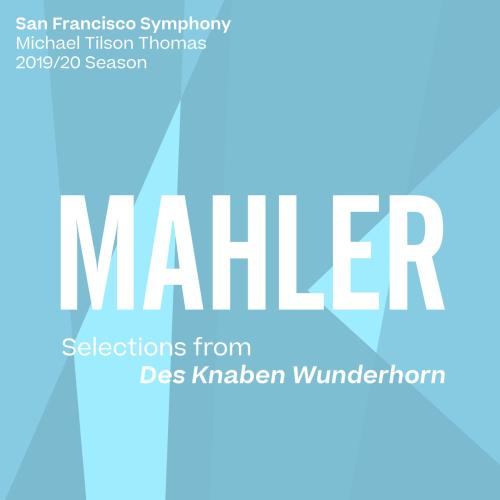
Mahler: Selections from Des Knaben Wunderhorn San Francisco Symphony & Michael Tilson Thomas
Album Info
Album Veröffentlichung:
2020
HRA-Veröffentlichung:
14.02.2020
Label: SFS Media
Genre: Classical
Subgenre: Orchestral
Interpret: San Francisco Symphony & Michael Tilson Thomas
Komponist: Gustav Mahler (1860-1911)
Das Album enthält Albumcover
Entschuldigen Sie bitte!
Sehr geehrter HIGHRESAUDIO Besucher,
leider kann das Album zurzeit aufgrund von Länder- und Lizenzbeschränkungen nicht gekauft werden oder uns liegt der offizielle Veröffentlichungstermin für Ihr Land noch nicht vor. Wir aktualisieren unsere Veröffentlichungstermine ein- bis zweimal die Woche. Bitte schauen Sie ab und zu mal wieder rein.
Wir empfehlen Ihnen das Album auf Ihre Merkliste zu setzen.
Wir bedanken uns für Ihr Verständnis und Ihre Geduld.
Ihr, HIGHRESAUDIO
- Gustav Mahler (1860 - 1911):
- 1 Mahler: Des Knaben Wunderhorn: Rheinlegendchen 03:08
- 2 Mahler: Des Knaben Wunderhorn: Das irdische Leben 02:59
- 3 Mahler: Des Knaben Wunderhorn: Wo die schönen Trompeten blasen 06:35
- 4 Mahler: Des Knaben Wunderhorn: Urlicht 05:07
Info zu Mahler: Selections from Des Knaben Wunderhorn
The songs of Des Knaben Wunderhorn (The Boy’s Magic Horn) by Gustav Mahler are voice-and-piano and voice-and-orchestra settings of German folk poems chosen from a collection of the same name assembled by Achim von Arnim and Clemens Brentano and published by them, in heavily redacted form, between 1805 and 1808.
Ten songs set for soprano or baritone and orchestra were first published by Mahler as a cycle in 1905. But in total 12 orchestral songs exist, and a similar number of songs for voice and piano.
The Backstory: Clemens Brentano and Achim von Arnim met in 1801 as students at the University of Göttingen, and the following June they took a boat trip together down the Rhine. Romantic aesthetics had recently begun to dominate the literary world, which was accordingly swept up in such fascinations as folk legend, a nostalgic longing for the Middle Ages, and the awe and mysteries of nature. In 1805 Brentano and von Arnim added to the Romantic bookshelf with a volume of their own, the first of what would eventually be three installments titled Des Knaben Wunderhorn (The Boy’s Magic Horn), a compendium of about a thousand poems.
Des Knaben Wunderhorn pretended to be a collection of authentic folk poems reaching deep into the German past. In fact, it was anything but authentic; the compilers made very free with their texts, adding, subtracting, and telescoping at will, and they even contributed some entirely original items.
They bravely dedicated their book to no less a personage than Johann Wolfgang von Goethe, who was enchanted. “By rights,” he wrote in a review, “this little book would find a place in every house where bright and vital people make their home….Best of all, this volume might lie on the piano of the amateur or master of musical composition so that these songs might come into their own by being matched to familiar and traditional melodies, that they might have appropriate tunes fitted to them, or that, God willing, they will inspire new and significant melodies.”
All three eventualities befell the poems in Des Knaben Wunderhorn. Some became attached to traditional melodies, some had newly composed folk-like tunes fitted to them, and—most interesting for posterity—many gave rise to “new and significant melodies” in the form of settings by accomplished composers of art songs. A “Who’s Who” of German song composers would turn out settings in the ensuing century, including Johann Friedrich Reichardt, Carl Friedrich Zelter, Robert Franz, Felix Mendelssohn, Robert Schumann, Johannes Brahms, Richard Strauss, Arnold Schoenberg, and—most remarkably of all—Gustav Mahler.
Mahler incorporated texts from this collection into movements of his Second, Third, and Fourth symphonies. But he also composed independent song settings from Des Knaben Wunderhorn with piano accompaniments, others with chamber orchestra. In addition, he prepared piano versions of his orchestral settings, but there is no doubt that in every case he conceived of the pieces with symphonic forces in mind.
No Maher aficionado would have trouble relating these songs to what many of us cherish most in his symphonies: their tendency to turn on a dime, to shift instantly from one emotional state to an entirely different one, to expose states of mind or soul in highlighted relief rather than settle into the becalmed doldrums of an emotional middle-ground.
The Music: In this program we hear four of Mahler’s Des Knaben Wunderhorn songs. “Rheinlegendchen” is orchestrally the smallest, using only a wind quintet together with the strings. The original name of the poem is “Rheinischer Bundesring,” which might be rendered as “Rhenish Bonding-Ring.”
For the muted, sinister song “Das irdische Leben,” with its restless divided strings, Mahler has shortened the poem and replaced the original haunting title of “Verspätung” (Delay).
“Wo die schönen Trompeten blasen is a rather surreal narrative in which a single singer takes several parts. Mahler emphasizes delicate and unearthly tones in this song; even the “schönen Trompeten” play much of this movement with mutes, and when their mutes are not inserted Mahler asks them to play quietly throughout.
Mahler is thought to have composed “Urlicht” with a piano accompaniment in 1892, and then went on to produce an orchestration of it, which he completed on July 19, 1893. At that time he was busily engaged with his Second Symphony, for which he found himself drawing on material he had produced previously. “Urlicht” would end up as the fourth movement of the Symphony, and the composer later suggested that this decision was the impetus for orchestrating it.—James M. Keller and Michael Steinberg
San Francisco Symphony
Michael Tilson Thomas, conductor
San Francisco Symphony
The San Francisco Symphony, widely considered to be among the most artistically adventurous and innovative arts institutions in the U.S., celebrated its Centennial season in 2011-12. The Orchestra was established by a group of San Francisco citizens, music-lovers, and musicians in the wake of the 1906 earthquake, and played its first concert on December 8, 1911. Almost immediately, the Symphony revitalized the city's cultural life. The Orchestra has grown in stature and acclaim under a succession of distinguished music directors: American composer Henry Hadley, Alfred Hertz (who had led the American premieres of Parsifal, Salome, and Der Rosenkavalier at the Metropolitan Opera), Basil Cameron, Issay Dobrowen, the legendary Pierre Monteux (who introduced the world to Le Sacre du printemps and Petrushka), Enrique Jordá, Josef Krips, Seiji Ozawa, Edo de Waart, Herbert Blomstedt (now Conductor Laureate), and current Music Director Michael Tilson Thomas (MTT). Led by Tilson Thomas, who begins his nineteenth season as Music Director in 2013-14, the SFS presents more than 220 concerts annually, and reaches an audience of nearly 600,000 in its home of Davies Symphony Hall, through its multifaceted education and community programs, and on national and international tours.
Since Tilson Thomas assumed his post as the SFS's eleventh Music Director in September 1995, he and the San Francisco Symphony have formed a musical partnership hailed as one of the most inspiring and successful in the country. His tenure with the Orchestra has been praised for outstanding musicianship, innovative programming, highlighting the works of American composers, and bringing new audiences to classical music. In addition, the Orchestra has been recognized nationally and internationally as a leader in music education and for the use of multimedia, television, technology, and the web to make classical music available worldwide to as many people as possible. MTT now is the longest-tenured music director for a major American orchestra, and the longest-serving music director in the San Francisco Symphony's history.
In its Centennial season, the Orchestra reprised its acclaimed American Mavericks Festival of music by pioneering modern American composers, featuring the world premieres of four commissioned works in two weeks of concerts at Davies Symphony Hall and on a two-week national tour, including four performances at Carnegie Hall. The San Francisco Symphony regularly mounts special weeklong semi-staged productions with multimedia, hosted and curated by MTT, and in 2012-13 presented specially staged performances of Grieg's Peer Gynt and the first concert performances by an orchestra of the complete music from Bernstein's West Side Story, which were recorded for release on SFS Media. Tilson Thomas and the Orchestra also dedicated several weeks to explorations of the music of Beethoven, selections of which were recorded for SFS Media, and Stravinsky, on the occasion of the 100th anniversary of the premiere of his Rite of Spring.
Since 1996, when Tilson Thomas led the Orchestra on the first of their more than a dozen national tours together, they have continued an ambitious yearly touring schedule that takes them to Europe, Asia and throughout the United States. In March 2014 they return to Europe for a three-week tour performing repertoire from the SFS Media catalogue including John Adams' Absolute Jest, Ives' A Concord Symphony, Mahler's Symphony No. 3, and Berlioz' Symphonie fantastique at two concerts each in London, Paris, and Vienna, and performances in Prague, Geneva, Luxembourg, Dortmund, and Birmingham. In 2012, they performed during a two-week national American Mavericks tour and a two-week tour of Asia with pianist Yuja Wang in Beijing, Shanghai, Hong Kong, Tokyo, Taipei, and Macau. In 2011, they made a three-week tour of Europe, culminating in Vienna performances of three Mahler symphonies to commemorate the anniversaries of the composer's birth and death. Recent touring highlights also include a three-week 2007 European tour that featured two televised appearances at the BBC Proms in London and concerts at several other major European festivals.
The Orchestra's recording series on SFS Media continues to reflect the artistic identity of its programming, including its commitment to performing the work of American maverick composers alongside that of the core classical masterworks. The San Francisco Symphony has recorded works from the American Mavericks Festival
concerts by Henry Cowell, Lou Harrison, and Edgard Varèse with pianist Jeremy Denk and organist Paul Jacobs, and won a 2013 Best Orchestral Performance Grammy award for its recording of John Adams' Harmonielehre and Short Ride in a Fast Machine. Other recently recorded works include Beethoven's Symphonies No. 5, 7, 9, and Piano Concerto No. 4, with soloist Emanuel Ax; Ives' A Concord Symphony; and Copland's Organ Symphony with Paul Jacobs. A live performance of John Adams' Absolute Jest with the St. Lawrence String Quartet and the Orchestra was recorded for future release on SFS Media, and live performances of Beethoven's Symphony No. 2 and Cantata on the Death of Emperor Joseph II was released in November 2013. Tilson Thomas and the Orchestra have recorded all nine of Gustav Mahler's symphonies and the Adagio from the unfinished Symphony No. 10, and the composer's works for voices, chorus, and orchestra for SFS Media. Their 2009 recording with the SFS Chorus of Mahler's sweeping Symphony No. 8, Symphony of a Thousand, and the Adagio from Symphony No. 10 won three Grammy awards, including Best Classical Album and Best Choral Performance. Other significant recordings include scenes from Prokofiev's Romeo and Juliet, a collection of Stravinsky ballets, a Gershwin collection, and Charles Ives: An American Journey, among others. In addition to fifteen Grammy awards, seven of them for the Mahler cycle, the SFS has won some of the world's most prestigious recording awards, including Japan's Record Academy Award, France's Grand Prix du Disque, and Germany's ECHO Klassik Award.
Tilson Thomas and the SFS launched the national Keeping Score PBS television series and multimedia project in 2006 to help make classical music more accessible to people of all ages and musical backgrounds. The project, an unprecedented undertaking among orchestras, is anchored by eight composer documentaries, hosted by Tilson Thomas, and eight live concert films; it also includes www.keepingscore.org, an innovative website to explore and learn about music; a national radio series; documentary and live performance DVD and CDs; and an education program for K-12 schools to further teaching through the arts by integrating classical music into core subjects. More than six million people have seen the Keeping Score television series, and the radio series has been broadcast on almost 100 stations nationally.
The San Francisco Symphony provides the most extensive education programs offered by any American orchestra today. In 1988, the Symphony established Adventures in Music (AIM), a free, comprehensive music education program that reaches every first- through fifth-grade child in the San Francisco Unified School District. The SFS Instrument Training and Support program reaches students in all San Francisco public middle and high schools with instrumental music programs, providing coaching by professional musicians. The Symphony expanded its educational offerings in 2011-12 with Community of Music Makers, a program that supports amateur choral singers and instrumental musicians with professional coaching by SFS musicians, rehearsals, and other learning opportunities. In development is a revitalized children's music education website, www.sfskids.org, created in conjunction with the UC Irvine Center for Computer Games and Virtual Worlds. The SFS also offers opportunities to hear and learn about great music through its programs Concerts for Kids, Music for Families, the internationally-acclaimed SFS Youth Orchestra, and annual free and community concerts.
Dieses Album enthält kein Booklet










